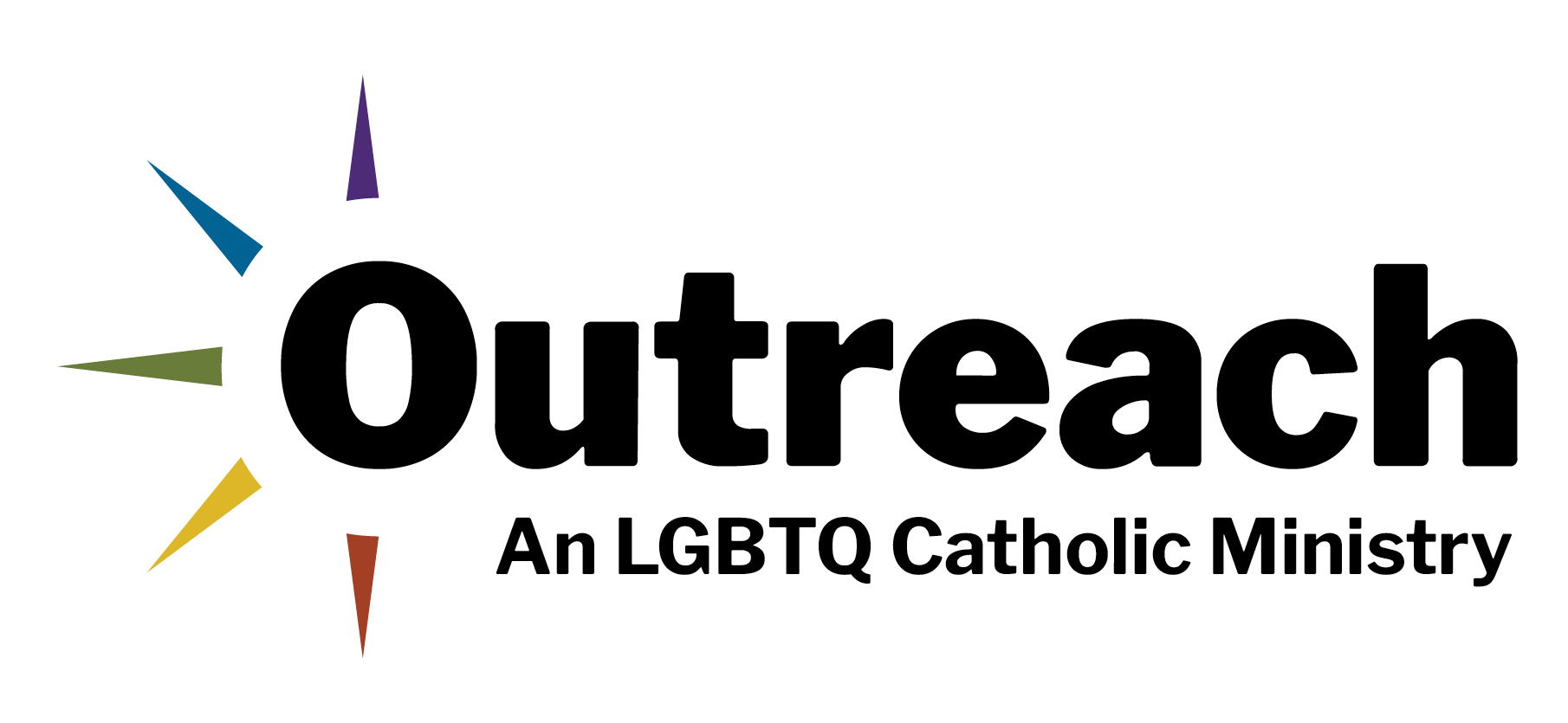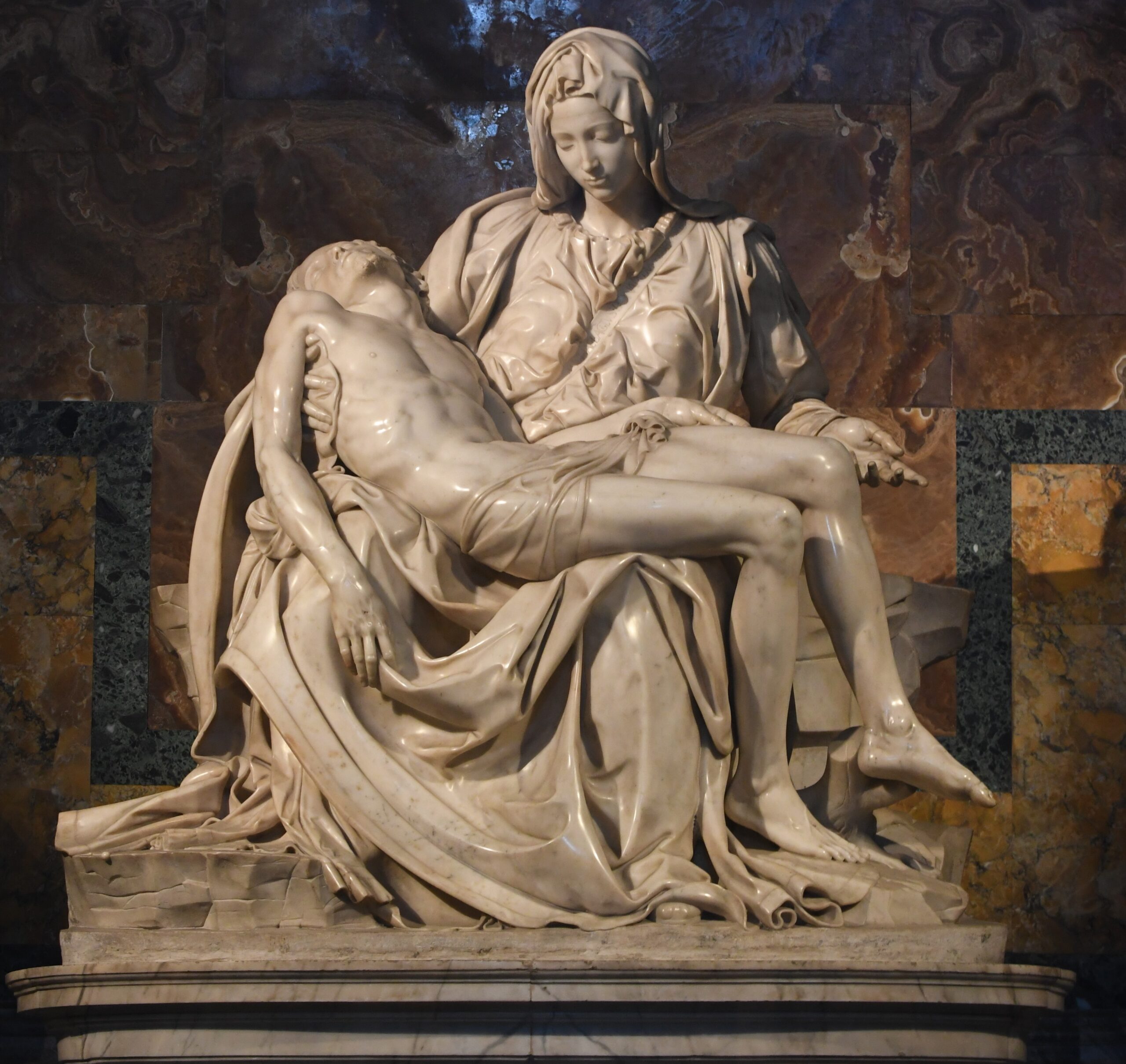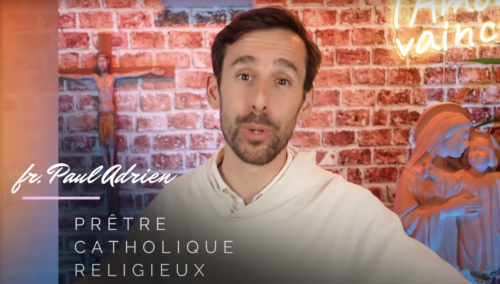This June I will make my second pilgrimage to Rome. My first trip was in 2019, when I had the chance to visit the four major basilicas as part of my lifelong growth in learning, faith and service. This journey occurred just before I began LGBTQ ministry as part of my work as a Catholic educator.
As I’ve shared before on Outreach and elsewhere, it changes a person to be confronted by suicide. Many years ago, an LGBTQ student struggling to fit in at school confided in me that he had attempted suicide. It’s one thing to follow the research and debate ideas, but nothing prepares you for the moment a child says, “I tried to kill myself.”
One of the most moving experiences I had in Rome was visiting Michelangelo’s Pietà in St. Peter’s Basilica. In Italian, the word “pietà” means “compassion,” which itself means to share in another person’s suffering.
To gaze upon Mary holding her son is a window into the service of love. It is a posture that mirrors Jesus’s own ministry.
What must it have been like for Mary to stand at the foot of the Cross and hear her tortured child point to the Beloved Disciple and say “Behold, your son” (Jn. 19:26)? What thoughts are behind the downward eyes of Michelangelo’s young Mary, who holds the dead body of her boy Jesus? The artist sculpted her left hand upturned, as if she was searching for the words to grieve.
To gaze upon Mary holding her son is a window into the service of love. It is a posture that mirrors Jesus’s own ministry. As I stood there in front of the Pieta, I could not describe the depth of its beauty nor the intensity of its sacredness.
Our Lady of Sorrows. Our Lady of Tears. Comforter of the Afflicted. Untier of Knots. These are some of the many titles of the Blessed Virgin Mary, who endured the unimaginable sight of the crucifixion of her son at the hands of religious authorities who misunderstood and rejected him. I can’t help but see the parallel to mothers of LGBTQ children who wonder why the church does not seek to understand their beloved families.
This feeling was magnified last spring when I received an email from an upset mother sharing her story. After her son came out, lost his faith and nearly died by suicide, she blamed the church. “I cried myself to sleep for two years,” she wrote. “I would contemplate the Pietà and know that Mary was feeling my own pain as she cradled the body of her dead son.”
These are real lives. No matter where you stand on matters of LGBTQ ministry in the church, my position remains the same. Our church can do better in pastoral care to persons who receive the baptismal blessing to “live always as a member of Christ’s body, sharing everlasting life.”
Instead of drafting rules that harm LGBTQ persons, can we first “go into the whole world” to meet these neighbors?
Instead of drafting rules that harm LGBTQ persons, can we first “go into the whole world” to meet these neighbors (Mk. 16:15)? For example, some school policies that regulate the use of a person’s name or pronouns promote the hiddenness of these lives that are kept in the closet. When private lives are made for public inquisition, it creates a culture of fear and silence. Our physical deafness and blindness leads to our own spiritual deafness and blindness. Moreover, it wounds the Body of Christ.
My prayer for Mother’s Day is that we might honor Mary’s service of love. The question is not about who is worthy of our love but about how we can draw circles of love that exclude no one. When I travel to Rome next month, I will offer a private prayer at the Pietà for Holy Mother Church and all mothers of LGBTQ children. My prayer will be that we might ponder all these things in our hearts, so that no mother will ever again weep in agony for the well-being of her child.




